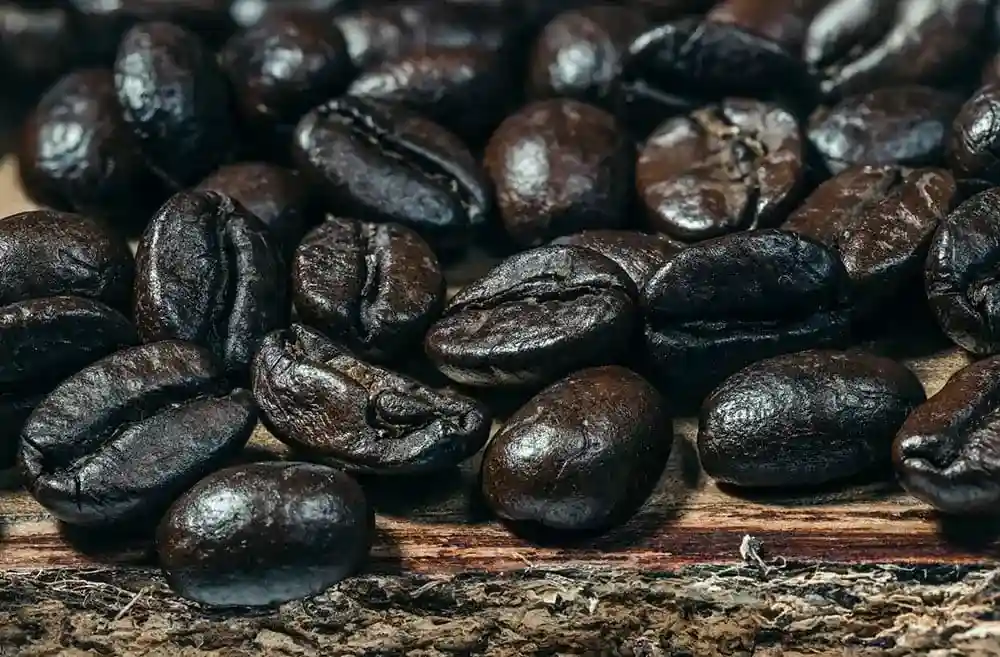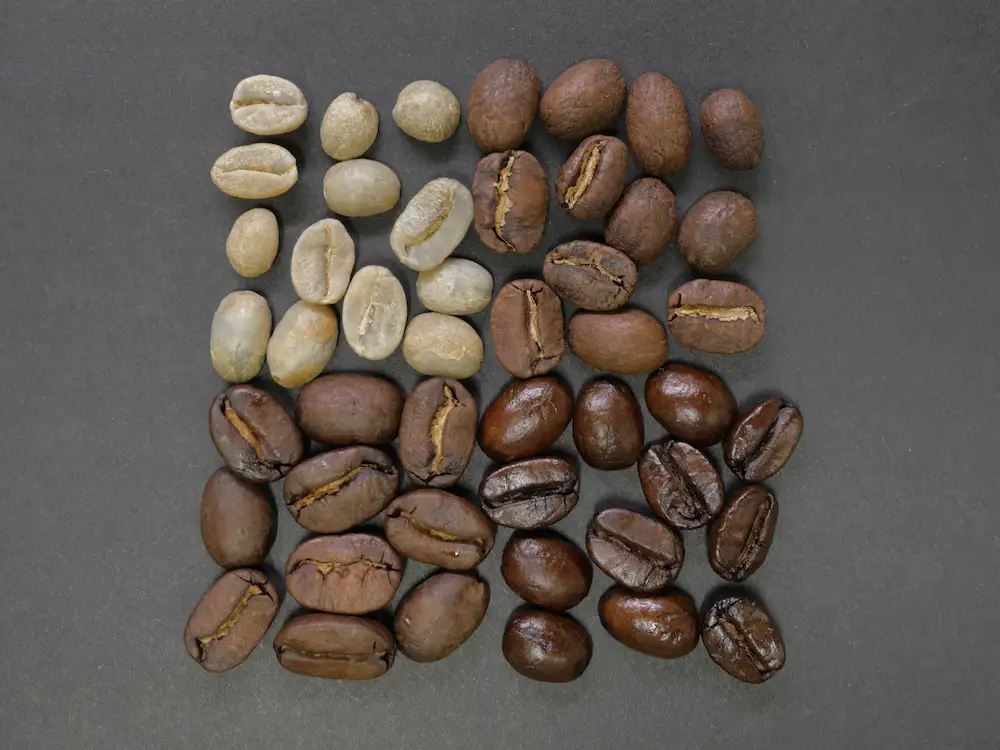Have you been confused by coffee roast levels recently? Have you noticed how some coffee tastes different compared to others?
Some taste bright and zesty. Others taste heavy and dark. Some taste like crackers or dark chocolate-covered raisins.
When it comes to drinking coffee, there’s a ton of stuff to unpack. The main reason some coffee tastes more intense is not necessarily due to the climate, the origin, or the methods for processing the beans.
However, all these will have an impact on how your coffee will taste. More than anything else, the primary flavors of the coffee will be determined by how intensely the beans were roasted.
The four types of coffee roasts are light roast, medium roast, medium-dark roast, and dark roast. So, what’s the difference between the four major types of coffee roasts, anyway?
The Different Types of Coffee Roasts:
1. Light Roast Coffee
Light Roast beans are roasted for the least amount of time. Lightly roasted beans often reach an internal temperature of 350 – 400 degrees Fahrenheit, right after the “first crack” occurs. This is a stage where the vapors inside the beans break through the outer wall and create a cracking noise.
These beans have a lighter brown color, and there is no oil on the beans. This type of coffee keeps most of its original characteristics, so the beans keep most of the caffeine, and the taste profile is more acidic and zestier. It has a thinner body with more delicate fruit-forward, herbal flavors.
Light roast is an excellent choice if you are searching for a serious coffee buzz, a milder taste, and a more acidic and zestier lighter body.
Roasters refer to a Light Roast as New England Roast, Half-City Roast, Cinnamon Roast, Light City Roast.
RELATED: The Best Coffee Bean Deals in 2023
2. Medium Roast Coffee
Medium Roast is brown and a little darker colored and thicker compared to a light roast.
But, the medium, like the light roast, does not have any oil on the beans. Medium roast is losing some of the bright, zest flavors, which are typical of a light roast. Instead, these coffees have medium acidity and body and a more rounded flavor profile; they also tend to be slightly sweeter.
Specialty coffee roasters often prefer medium roasts because they are more suitable for coffee drinkers.
Medium roast coffees reach 400-430 degrees Fahrenheit and are roasted slightly beyond the first crack but not to the second crack.
If you are after a less acidic, less intense, more balanced, darker, and sweeter coffee flavor with a medium amount of caffeine, then medium roast is the move.
Roasters refer to Medium Roast as Regular roast, American Roast, City roast.
3. Medium-Dark Roast Coffee
Medium-dark roasts have bolder flavors and flavors a heavier body compared to the medium roast. These beans are dark brown in color, and oil is beginning to shine on their surface. Beans roasted to medium-dark reach an internal temperature of 430 – 450 degrees Fahrenheit
The flavor profile is richer, fuller, and has less acidity because the extended roasting destroys all the acidity, and it lets most of the aromas come up on the top.
Omit, if you prefer a rich, full, profiled, deep flavored coffee with a hint of a bittersweet aftertaste, then the Medium-Dark Roast is your best bet.
Common Names are: Full City, Vienna
4. Dark Roast Coffee

Last but not least is Dark Roast. This roast has a dark chocolate-like brown color and a visibly oily surface. These coffee beans are roasted the longest and in higher temperatures than the others.
The beans will lose their original flavors, but the original flavor will be replaced by the flavors gained from the roasting process. You can expect sweet, buttery, and smoky finishes.
To be considered Dark Roast, beans reach a temperature of around 465 degrees Fahrenheit, which is the end of the second crack. Due to the length of roasting and the higher temperatures, the dark roast will have the least amount of caffeine as caffeine is decreased from light roast to dark roast.
If you want a full-bodied coffee experience with sweeter, richer flavors, a smoky and buttery finish with the least acidity, then dark roast is a perfect choice.
Due to their popularity amongst the French and the Italians, thus the often-European names for the dark roast.
Common Names are: French Roast, Italian Roast, Espresso Roast
Conclusion
There are considerable differences between the four major types of coffee roasts. Regardless of the roast type, roasting coffee is as much of an art as science, and different flavors will come out depending on the roasting process applied.
In this guide, we explained the characteristics of the various roast types. Now you can easily pick a bag of cool beans, and order a cup of your favorite roast with confidence.
Our recommendation is to sample and brew a pot of each roast and see what you like more. Remember, if you are stuck with one type of roast, you can always try something new. You can even try roasting coffee from the comfort of your own home. You never know what might become your new favorite coffee roast.
SEE ALSO:
- What is Specialty Coffee?
- Easy Iced Mocha Recipe
- 25 Hilarious Spongebob Coffee Meme That Will Have You Laughing
Featured Image Credit: Wade Austin Ellis, Unsplash
Click here to view the Visual Story Version of this Article.

